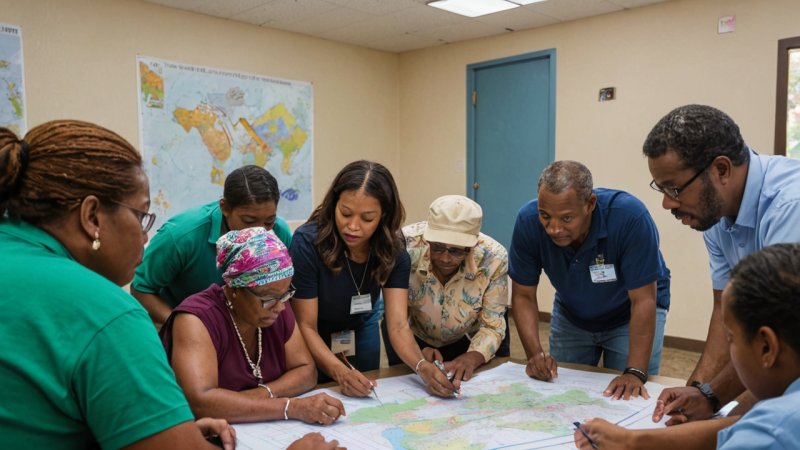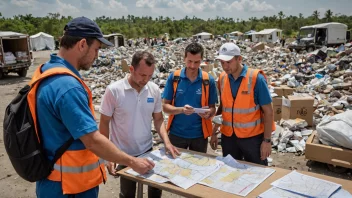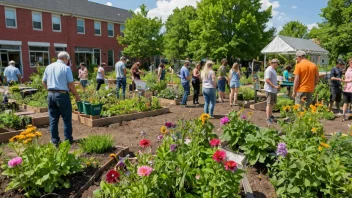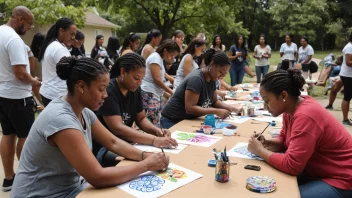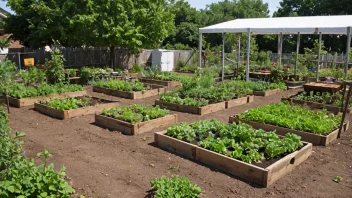Introduction
In today's world, climate change poses significant challenges to communities across the globe. This article will guide you through the process of creating a community resilience plan aimed at mitigating the impacts of climate change. You will learn how to assess vulnerabilities, engage stakeholders, develop strategies, and implement actions that strengthen your community's ability to adapt and thrive in a changing environment.
Step 1: Assess Community Vulnerabilities
The first step in creating a resilience plan is to understand the specific vulnerabilities your community faces due to climate change. This involves gathering data and insights about local climate impacts.
- Research Climate Data: Collect local climate data relevant to your area, including temperature changes, precipitation patterns, and historical weather events.
- Identify Vulnerable Populations: Determine which groups in your community are most at risk, such as low-income families, the elderly, and those with disabilities.
- Analyze Infrastructure Risks: Evaluate the condition of local infrastructure (roads, bridges, public transportation) and identify areas prone to flooding, heatwaves, or other climate-related issues.
Step 2: Engage Stakeholders
Building a community resilience plan requires collaboration and input from various stakeholders. Engaging community members and organizations ensures diverse perspectives are included.
- Host Community Meetings: Organize meetings to discuss climate change impacts and gather feedback from residents. Use these forums to raise awareness about the importance of resilience planning.
- Collaborate with Local Organizations: Partner with local non-profits, businesses, and government agencies that have a vested interest in community resilience.
- Form a Resilience Task Force: Create a group comprised of community leaders, activists, and interested residents to guide the planning process.
Step 3: Develop Strategies
Once vulnerabilities have been assessed and stakeholders engaged, the next step is to develop actionable strategies that address these challenges.
- Prioritize Actions: Based on the data collected, identify priority areas for action that will have the most significant impact on community resilience.
- Explore Adaptation Options: Research various adaptation strategies, such as green infrastructure, sustainable agriculture, and community education programs.
- Draft a Resilience Vision: Create a clear vision statement that articulates the community's goals for resilience in the face of climate change.
Step 4: Implement Actions
With strategies in place, it’s time to put your plan into action. Implementation is crucial for making real progress toward resilience.
- Assign Responsibilities: Clearly define roles and responsibilities for stakeholders in the implementation process.
- Set Timelines: Establish a timeline for when specific actions will be initiated and completed.
- Monitor Progress: Regularly review the progress of implemented actions and adjust the plan as necessary based on feedback and changing conditions.
Step 5: Evaluate and Revise the Plan
Evaluation is a critical component of any resilience plan. It enables the community to learn from experiences and adapt strategies as needed.
- Conduct Regular Assessments: Schedule periodic reviews of the resilience plan to assess what is working and what isn’t.
- Gather Community Feedback: Solicit input from community members about their experiences and suggestions for improvement.
- Revise the Plan: Make necessary adjustments to the plan based on evaluation findings and emerging climate data.
Conclusion
Creating a community resilience plan for climate change is a vital step toward ensuring the long-term health and wellbeing of your community. By assessing vulnerabilities, engaging stakeholders, developing strategies, implementing actions, and evaluating progress, you can foster a resilient environment that can withstand the challenges posed by climate change.
Final Advice: Remember, resilience planning is an ongoing process. Stay informed about climate issues, continue engaging your community, and adapt your strategies as needed to create a sustainable future for all.
